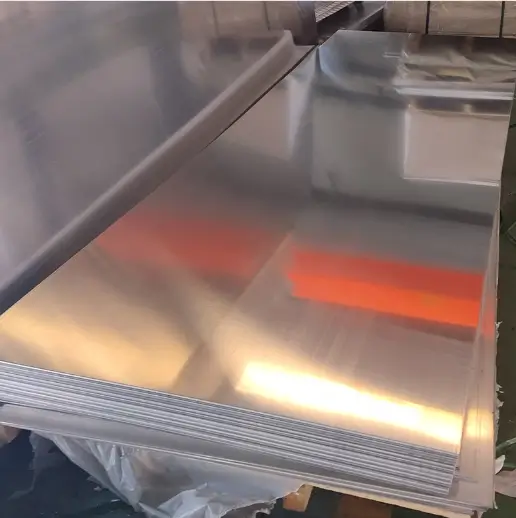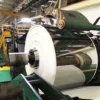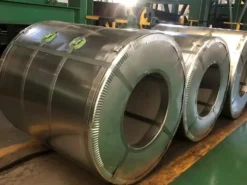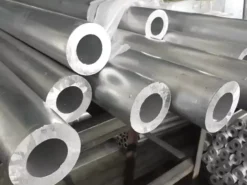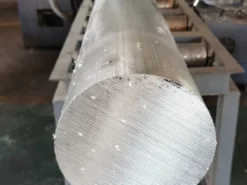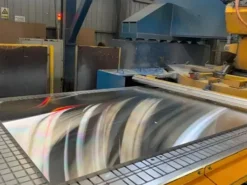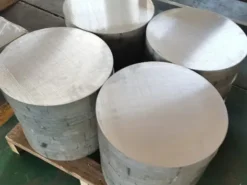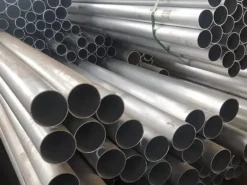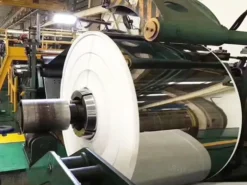Aluminum sheet refers to aluminum material with a thickness of 0.2mm to 500mm or less, a width of 200mm or more, and a length of 16m or less, which is referred to as aluminum sheet or aluminum sheet. Aluminum material with a thickness of 0.2mm or less and a width of 200mm or less is referred to as strip or strip (of course, with the progress of large equipment, there are also many aluminum sheets with a maximum width of 600mm).
Aluminum plate refers to a rectangular plate made by rolling aluminum ingots, which is divided into pure aluminum plate, alloy aluminum plate, thin aluminum plate, medium thick aluminum plate, and patterned aluminum plate.
Aluminum plates are usually divided into the following two types:
1. Classified by alloy composition:
High purity aluminum plate (rolled from high purity aluminum with a content of 99.9 or more)
Pure aluminum plate (basically rolled from pure aluminum)
Alloy aluminum plate (composed of aluminum and auxiliary alloys, usually including aluminum copper, aluminum manganese, aluminum silicon, aluminum magnesium, and other series)
Composite aluminum plate or brazed plate (special purpose aluminum plate material obtained through multiple material composite methods)
Aluminum coated aluminum plate (thin aluminum plate wrapped on the outer edge for special purposes)
2. Divided by thickness into: (unit: mm)
Aluminum sheet 0.15-2.0
Regular sheet 2.0-6.0
Aluminum plate 6.0-25.0
Aluminum plate 25-200
Over 200 thick plates
Aluminum plate classification:
Brushed aluminum plate: The manufacturing process of repeatedly scraping aluminum plates with sandpaper to create lines. The main process is divided into three parts: ester removal, sand grinding, and water washing. In the aluminum plate wire drawing process, the special coating technology after Anodizing can make the aluminum plate surface generate a coating layer containing the metal composition, clearly showing every fine trace, so that the metal matt has a fine hair luster.
Aluminum oxide plate: aluminum plate is formed by electrolysis under specific conditions and applied current by placing aluminum plate in corresponding electrolyte (such as sulfuric acid, chromic acid, oxalic acid, etc.) as anode. The anodized aluminum plate forms a thin layer of aluminum oxide on the surface, with a thickness of 5-20 microns. The hard anodized film can reach 60-200 microns.
PS aluminum plate (also known as printed zinc plate or newspaper plate): refers to an aluminum plate with a printed pattern thickness of 025 or 03 material on the back.
Mirror aluminum plate: refers to an aluminum plate that is processed by various methods such as rolling and polishing to achieve a mirror like effect on the surface of the plate.
Embossed aluminum plate, also known as aluminum embossed plate, belongs to aluminum products that form various patterns on the surface after rolling processing on the basis of aluminum plate. It is widely used and mainly used in packaging, architecture, curtain walls, and other aspects.
The specific cleaning steps for aluminum plates are as follows:
1. First, rinse the surface of the board with a large amount of water;
2. Gently wipe the surface of the board with a soft cloth soaked in detergent diluted with water;
3. Rinse the board surface with a large amount of water to remove any dirt;
4. Check the board surface and focus on cleaning areas that have not been cleaned thoroughly with detergent;
5. Rinse the board surface with clean water until all the detergent has been rinsed off.
Attention: Do not clean hot board surfaces (when the temperature exceeds 40 ° C), as the rapid evaporation of moisture is harmful to the baking paint on the board surface!
It is particularly important to note that suitable detergents should be selected, and a basic principle is to always use neutral detergents! Please do not use strong alkaline detergents such as potassium hydroxide, sodium hydroxide or sodium carbonate, strong acidic detergents, abrasive detergents and baking varnish soluble detergents.

